EXPLAINED: These are the weapons Sweden is sending to Ukraine

Sweden last month announced the largest ever delivery of heavy weaponry in its history, including the advanced Archer missile defence system, NLAW anti-tank missiles and CV-90 assault vehicles. Here's what you need to know about these weapons.
Sweden's government said in mid-January that it was giving billions of kronor's worth of weaponry to aid Ukrainian forces in their defence of the country, and in their efforts to recover territories lost to Russia since its invasion began last February.
Here are the main weapons included in the delivery.
The Archer Artillery System
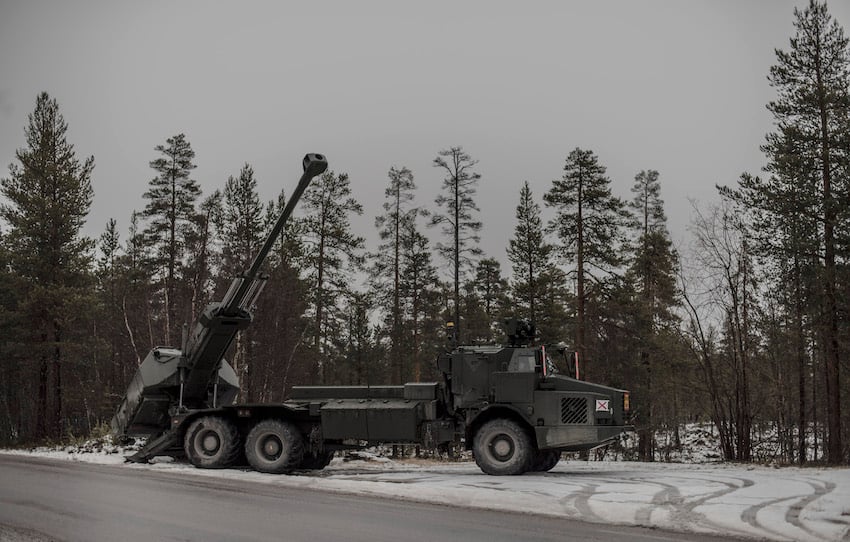
Archer ready for fire mission during the Swedish Army's Trident Juncture exercise in 2018. Photo: Swedish Armed Forces
The Archer Artillery System, otherwise known as Archer FH77BW L52 or Artillerisystem 08, is a mobile artillery system developed by the Swedish company Bofors, and then ordered by the Swedish and Norwegian armed forces after Bofors had been taken over by BAE Systems.
The weapon entered service in Sweden in October 2013.
The howitzer has a range of of either 35 kilometres, or more than 50 kilometres, depending on whether it is using BAE Bofors/Nexter Bonus rounds or the Raytheon/Bofors guided artillery shell M982 Excalibur. It is mounted either on the back of a Volvo A30D 6×6 articulated all-terrain hauler vehicle or on the back of a Rheinmetall MAN HX2 tactical truck.
Defence minister Pål Jonson told a press conference on Tuesday that Archer was "perhaps the world's most advanced artillery system", and that Ukraine had been asking to have it for "a long time".
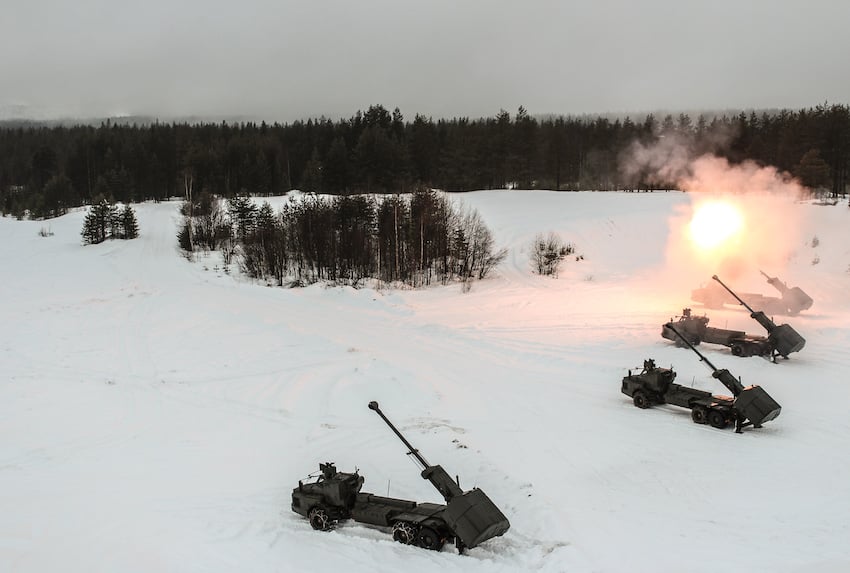
Archer howitzers are fired during a military exercise in Sweden in 2018. Photo: Swedish Armed Forces
Jonson said that the reason Ukraine was so interested in receiving Archer howitzers was for their 50 kilometres range and high precision, which help give Ukrainian forces the edge over Russian artillery.
M982 Excalibur shells are fitted with GPS systems allowing them to guide themselves towards their target.
Ukraine's foreign minister Dmytro Kuleba during a visit to Sweden in August said that receiving Archer systems was one of Ukraine's top priorities, but the Swedish Armed Forces were initially reluctant to do so due to its importance for Swedish defence, and the weapons' complexity, which will mean extensive training for Ukrainian forces, and significant maintenance and reserve parts requirements.
According to Dagens Nyheter, there are currently 24 Archer systems in storage, of which at least 20 could be upgraded so they can be put into use. It is unclear how many will be delivered to Ukraine, but an Archer battalion usually consists of 12 vehicles.
CV90 assault vehicles
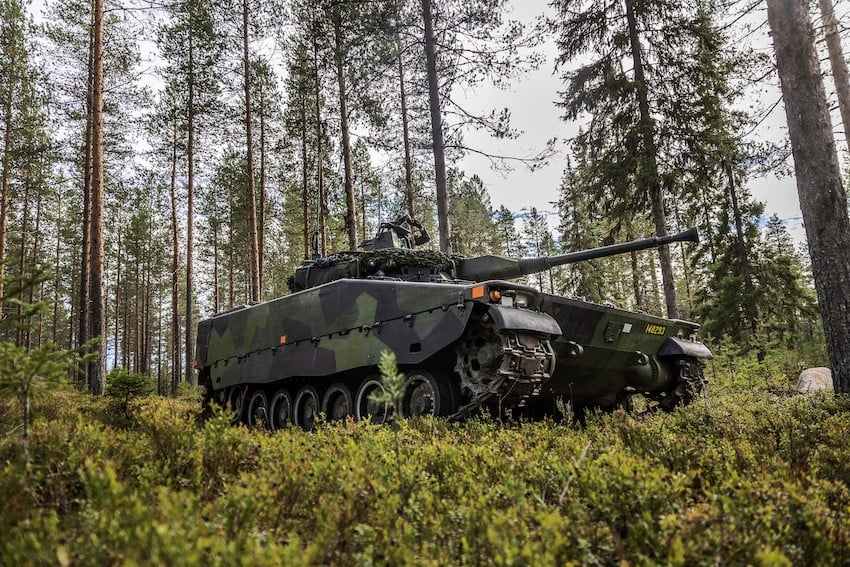
A CV90 assault vehicle on exercise in Sweden. Photo: Swedish Armed Forces
Sweden will deliver Ukraine up to 50 of these assault vehicles, known in Swedish as Stridsfordon 90.
The CV90 was developed by the Swedish Defence Materiel Administration in the mid-1980s in cooperation with the Swedish companies Hägglunds and Bofors, now both part of BAE Systems. It is designed to be a rapid all-terrain vehicle, sufficiently well armoured to withstand attack, and able to target both tanks and planes.
The standard assault vehicle is armed with a 40 mm Bofors cannon, a machine gun, and six grenade launchers. It is manned by a crew of three with seats in the back for up to eight infantry soldiers.
"With the CV90 the Ukrainians will get stronger firepower, better mobility and better protection," defence minister Pål Jonsson said at the press conference.
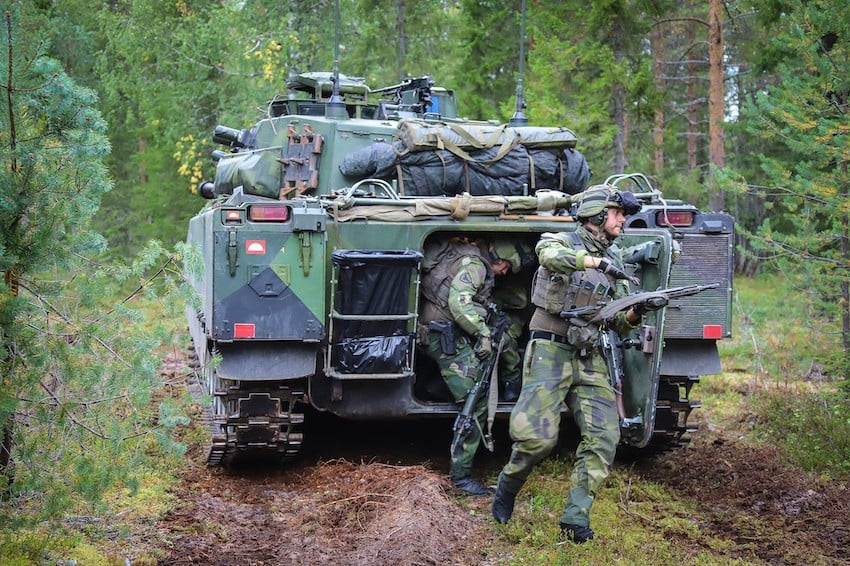
Troops file out of the back of a CV90 assault vehicle on an exercise in Sweden. Photo: Swedish Armed Forces
Sweden has 549 CV90s currently in service, of which 42 are the heavily armoured CV9040C variant.
NLAW anti-tank missiles
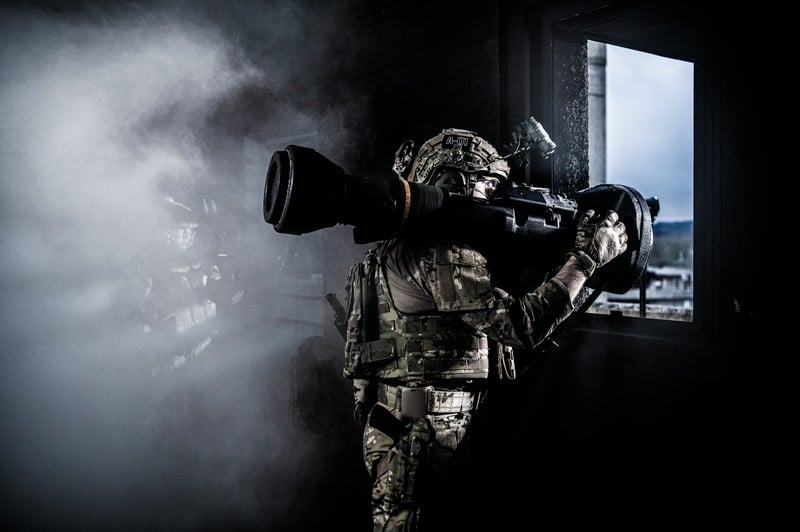
The NLAW hand held anti-tank missile is a powerful weapon against enemy tanks. Photo: SAAB
The NLAW, which stands for "Next-generation Light Anti-tank Weapon", is a handheld, disposable, fire-and-forget anti-tank weapon, which is capable of penetrating 500 millimetres of armour at a range of between 20 and 800 metres.
The UK has sent more than 6,500 of the weapons to Ukraine and they are thought to have been responsible for a significant proportion of the Russian tanks destroyed by Ukrainian forces.
The chief attraction of the weapon is how easy it is to use, even by soldiers who have received very little training, as it does not require the user to enter any information on the range to the target in order to aim and fire it. All the user has to do is follow the target for a few seconds with the sight and then the missile itself does the rest of the work.
The missile uses its own magnetic and optical sensors to take itself about one metre above the tanks turret, where it detonates, knocking out heavy tanks in a single shot. A soldier can be trained to use it in less than an hour.
The NLAW was designed by SAAB in Sweden at the request of the British Armed Forces, and has been assembled by Thales in Northern Ireland.
Comments (2)
See Also
Sweden's government said in mid-January that it was giving billions of kronor's worth of weaponry to aid Ukrainian forces in their defence of the country, and in their efforts to recover territories lost to Russia since its invasion began last February.
Here are the main weapons included in the delivery.
The Archer Artillery System

The Archer Artillery System, otherwise known as Archer FH77BW L52 or Artillerisystem 08, is a mobile artillery system developed by the Swedish company Bofors, and then ordered by the Swedish and Norwegian armed forces after Bofors had been taken over by BAE Systems.
The weapon entered service in Sweden in October 2013.
The howitzer has a range of of either 35 kilometres, or more than 50 kilometres, depending on whether it is using BAE Bofors/Nexter Bonus rounds or the Raytheon/Bofors guided artillery shell M982 Excalibur. It is mounted either on the back of a Volvo A30D 6×6 articulated all-terrain hauler vehicle or on the back of a Rheinmetall MAN HX2 tactical truck.
Defence minister Pål Jonson told a press conference on Tuesday that Archer was "perhaps the world's most advanced artillery system", and that Ukraine had been asking to have it for "a long time".

Jonson said that the reason Ukraine was so interested in receiving Archer howitzers was for their 50 kilometres range and high precision, which help give Ukrainian forces the edge over Russian artillery.
M982 Excalibur shells are fitted with GPS systems allowing them to guide themselves towards their target.
Ukraine's foreign minister Dmytro Kuleba during a visit to Sweden in August said that receiving Archer systems was one of Ukraine's top priorities, but the Swedish Armed Forces were initially reluctant to do so due to its importance for Swedish defence, and the weapons' complexity, which will mean extensive training for Ukrainian forces, and significant maintenance and reserve parts requirements.
According to Dagens Nyheter, there are currently 24 Archer systems in storage, of which at least 20 could be upgraded so they can be put into use. It is unclear how many will be delivered to Ukraine, but an Archer battalion usually consists of 12 vehicles.
CV90 assault vehicles

Sweden will deliver Ukraine up to 50 of these assault vehicles, known in Swedish as Stridsfordon 90.
The CV90 was developed by the Swedish Defence Materiel Administration in the mid-1980s in cooperation with the Swedish companies Hägglunds and Bofors, now both part of BAE Systems. It is designed to be a rapid all-terrain vehicle, sufficiently well armoured to withstand attack, and able to target both tanks and planes.
The standard assault vehicle is armed with a 40 mm Bofors cannon, a machine gun, and six grenade launchers. It is manned by a crew of three with seats in the back for up to eight infantry soldiers.
"With the CV90 the Ukrainians will get stronger firepower, better mobility and better protection," defence minister Pål Jonsson said at the press conference.

Sweden has 549 CV90s currently in service, of which 42 are the heavily armoured CV9040C variant.
NLAW anti-tank missiles

The NLAW, which stands for "Next-generation Light Anti-tank Weapon", is a handheld, disposable, fire-and-forget anti-tank weapon, which is capable of penetrating 500 millimetres of armour at a range of between 20 and 800 metres.
The UK has sent more than 6,500 of the weapons to Ukraine and they are thought to have been responsible for a significant proportion of the Russian tanks destroyed by Ukrainian forces.
The chief attraction of the weapon is how easy it is to use, even by soldiers who have received very little training, as it does not require the user to enter any information on the range to the target in order to aim and fire it. All the user has to do is follow the target for a few seconds with the sight and then the missile itself does the rest of the work.
The missile uses its own magnetic and optical sensors to take itself about one metre above the tanks turret, where it detonates, knocking out heavy tanks in a single shot. A soldier can be trained to use it in less than an hour.
The NLAW was designed by SAAB in Sweden at the request of the British Armed Forces, and has been assembled by Thales in Northern Ireland.
Join the conversation in our comments section below. Share your own views and experience and if you have a question or suggestion for our journalists then email us at [email protected].
Please keep comments civil, constructive and on topic – and make sure to read our terms of use before getting involved.
Please log in here to leave a comment.